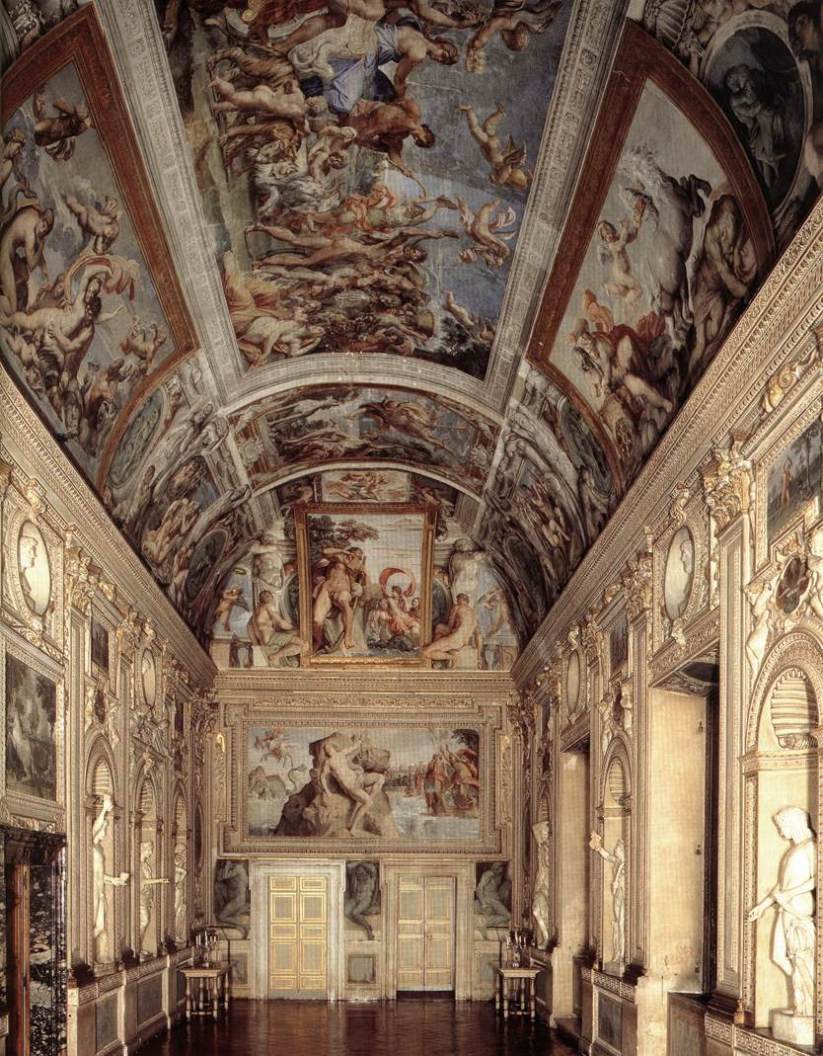The Loves of the Gods
The Council of Trent was an Ecumenical Council of the Roman Catholic Church. It convened in Trent between December 13, 1545, and December 4, 1563 in twenty-five sessions for three periods [1]. The Council made many decisions for the church during its years in session in an effort to establish the traditions and doctrines of the church, as well as to correct the corruption within it [2]. The one of the issue that discussed was decrees concerning sacred music and religious art, though inexplicit, were subsequently amplified by theologians and writers to condemn many types of Renaissance and medieval styles and iconographies, impacting heavily on the development of these art forms [1].
The Loves of the Gods is a monumental fresco cycle, completed by the Bolognese artist Annibale Carracci in the Farnese Gallery, now the French Embassy in Rome, Italy. Work was started in 1597 and was not entirely finished until 1608, one year before Annibales’s death. The frescoes were greatly admired at the time, and were later considered to reflect a significant change in painting style away from sixteenth centry Mannersim to anticipation of the development of Baroque and Classicism in Rome during the seventeenth centrury [3].
The piece is a visual display of love in Greek mythology. The ceiling is notable because of the new style “quadro riportato” were employed. In Loves of the Gods, there appear to be numerous framed oil paintings on the ceiling, but the ceiling is actually fresco [4].
This new style of painting truly was a Baroque style. It is more naturalistic, being straightforward, clear, legible and rejection of mannerism [5]. I really like The Loves of the Gods made in Baroque period because The Loves of the Gods expresses importance of morality and appropriate love. This art portrayed eternal love. I can also feel the pure love of God when viewing from a religious standpoint.
References
[1] http://en.wikipedia.org/wiki/Council_of_Trent
[2] http://www.thenagain.info/Webchron/westeurope/CouncilTrent.html
[3] http://en.wikipedia.org/wiki/The_Loves_of_the_Gods_(Carracci)
[4] http://artontap.blogspot.com/2010/02/loves-of-gods.html
[5] http://smarthistory.khanacademy.org/carracci-farnese-ceiling.html


